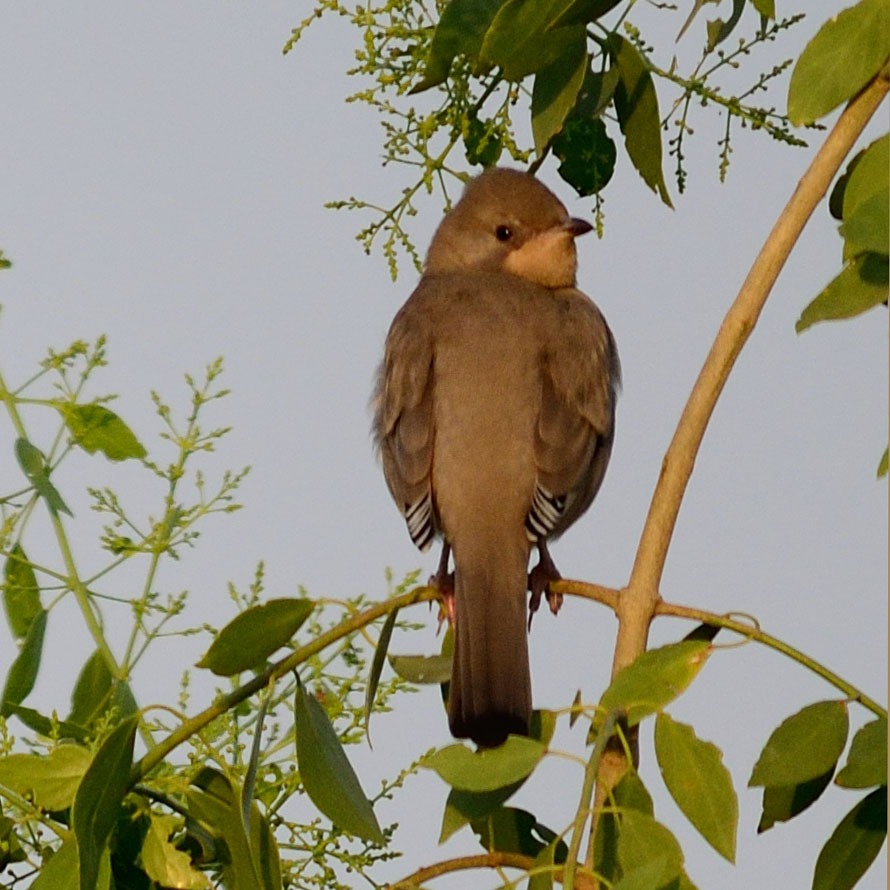The Erythrocercidae family contains only genus Erythrocercus, which is restricted to Africa. Although termed flycatchers, they are warbler-like in appearance. Also, they do not fly around looking for insects, but instead mainly glean their prey from leaves and bark, only occasionally making a brief sortie for one in the air. They are small - 9 to 12 cm long. Their nests are ball shaped with a side entrance and suspended 5 to 10 meters above the ground.
Genus Erythrocercus
Flycatcher,_Chestnut-capped Erythrocercus mccallii
Description: The chestnut-capped flycatcher has a grey mantle. The center crown, some of the lower back, and the tail are chestnut. The cap has some small white streaks. The throat plus breast are buff and the belly is white. The chestnut-capped flycatcher is about 10 cm long.
Range: West-central Africa.
Habitat: Forest edges, more open woodlands.
Diet: Insects which it mainly gleans from leaves. Also catches prey in the air, but with short flights.
Conservation status: Least Concern.
Image by: 1) Haller1962 2) Francesco_Veronesi - Ghana 3) Charles_Sharp - GhanaRange: West-central Africa.
Habitat: Forest edges, more open woodlands.
Diet: Insects which it mainly gleans from leaves. Also catches prey in the air, but with short flights.
Conservation status: Least Concern.
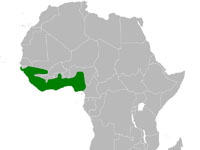
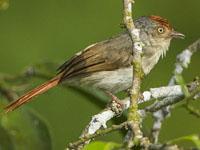
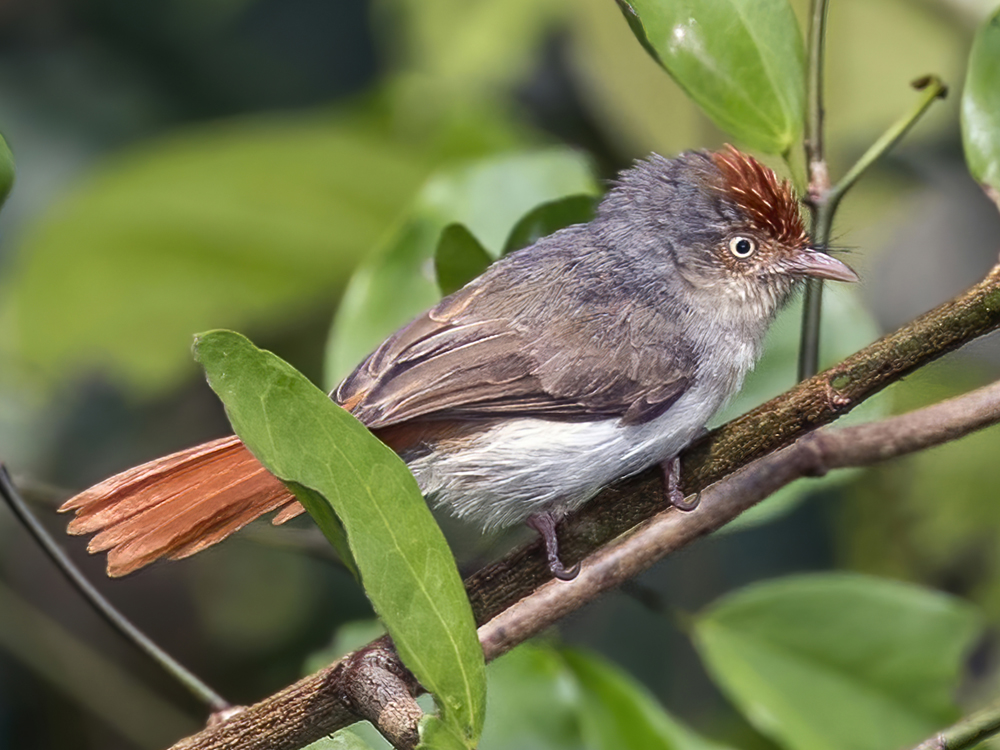
Flycatcher,_Little Yellow Erythrocercus holochlorus
.Description: The little yellow flycatcher has greenish-yellow upperparts. The tail and wings are brown, yellow, and green. It has a darker greenish-yellow crown and forehead. The upperparts are yellow and there is a yellowish eye-ring. The little yellow flycatcher is only 9 cm long.
Range: Kenya, Somalia, and Tanzania.
Habitat: Forests, woodlands, thickets; mostly coastal.
Diet: Insects and spiders which it mainly gleans from leaves. Also catches prey in the air, but with short flights.
Conservation status: Least Concern.
Image by: 1) Haller1962 2, 3) Steve Garvie - KenyaRange: Kenya, Somalia, and Tanzania.
Habitat: Forests, woodlands, thickets; mostly coastal.
Diet: Insects and spiders which it mainly gleans from leaves. Also catches prey in the air, but with short flights.
Conservation status: Least Concern.
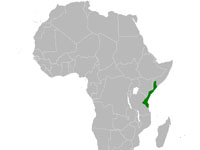

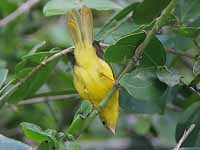
Flycatcher,_Livingstone's Erythrocercus livingstonei
Description: The Livingstone's flycatcher has greenish-yellow upperparts. The head is mostly pale grey. The flight feathers are dark brown with some yellow edging. It has a rufous tail. The underparts are yellow. The Livingstone's flycatcher is 10 to 12 cm long.
Range: Southeast Africa: Malawi, Mozambique, Tanzania, Zambia, Zimbabwe.
Habitat: Forests, thickets.
Diet: Insects which it mainly gleans from leaves. Also catches prey in the air, but with short flights.
Conservation status: Least Concern.
Image by:
1) Haller1962 2) Joseph Smit 3) Francesco Veronesi - Malawi 4) Nik_Borrow - ZimbabweRange: Southeast Africa: Malawi, Mozambique, Tanzania, Zambia, Zimbabwe.
Habitat: Forests, thickets.
Diet: Insects which it mainly gleans from leaves. Also catches prey in the air, but with short flights.
Conservation status: Least Concern.
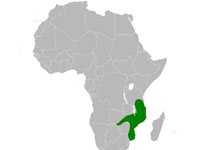
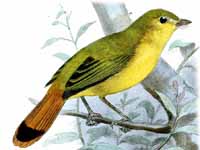
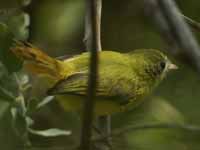

The hyliotas eat insects that they mainly glean from leaves and bark. Some if not all of they also can cat insects in the air. They are all found in Africa. They are 11 to 12 cm long, with dark purple to black upperparts. Some species have a white patch on the foldeed wing. The underparts are yellow-orange to white.
Hyliota is a genus of passerine bird. The taxonomic position of the genus has been a long standing mystery. They have been formerly regarded as Old World warblers in the Sylviidae family, or related to the batises and wattle-eyes in the family Platysteiridae, bush-shrikes in the family Malaconotidae, or even Old-World flycatchers in the family Muscicapidae. An analysis of the mitochondrial DNA of the genus and possible relatives found they have no close relatives and are basal in the clade Passerida.
Genus Hyliota
Hyliota,_Southern Hyliota australis
Description: The male southern hyliota has black upperparts with a white wing patch. The tail is also black. The underparts vary from yellowish to white depending on the subspecies. For the yellowish case, the underparts get paler progressing towards the belly. The similar female has dark brown upperparts. The male southern hyliota is about 12 cm long.
Range: Southern Africa.
Habitat: Forests, forest edges.
Diet: insects which it gleans from foliage.
Conservation status: Least Concern.
Image by: Dick Daniels - specimen in Nairobi National Museum, Kenya 2) Peter_Steward - MalawiRange: Southern Africa.
Habitat: Forests, forest edges.
Diet: insects which it gleans from foliage.
Conservation status: Least Concern.
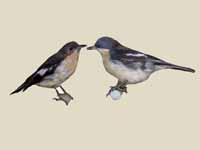
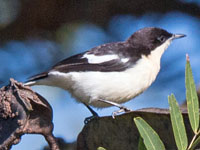
Hyliota,_Usambara Hyliota usambara
Description: The Usambara hyliota has glossy blue-black upperparts with some white on wings. The head above the eyes and the nape are also glossy blue-black. The throat and upper-breast are yellow-orange which becomes white on the belly. Some have much less yellow-orange on the underparts, perhaps they are males as is the case for the violet-backed hyliota. The Usambara hyliota is 11 cm long.
Range: Tanzania, mainly in the vacinity of the Usambara Mountains.
Habitat: Forests, forest edges.
Diet: insects which it gleans from foliage. It may also flycatch.
Conservation status: It is listed as Endangered because of habitat loss.
Range: Tanzania, mainly in the vacinity of the Usambara Mountains.
Habitat: Forests, forest edges.
Diet: insects which it gleans from foliage. It may also flycatch.
Conservation status: It is listed as Endangered because of habitat loss.
Hyliota,_Violet-backed Hyliota violacea
Description: The violet-backed hyliota has glossy dark violet upperparts including the crown, nape, and tail. The male has whitish underparts while the female has pale orange underparts with a white rump. The violet-backed hyliota is about 13 cm long.
Range: West-central Africa.
Habitat: Forests, forest edges, cleared woodlands.
Diet: insects which it gleans from foliage and also from the bark..
Conservation status: Least Concern.
Image by: 1) John Gerrard Keulemans 2) Francesco Veronesi - GhanaRange: West-central Africa.
Habitat: Forests, forest edges, cleared woodlands.
Diet: insects which it gleans from foliage and also from the bark..
Conservation status: Least Concern.
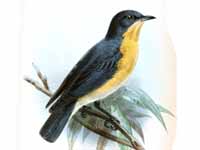
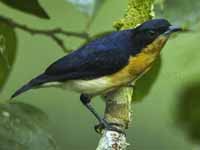
Hyliota,_Yellow-bellied Hyliota flavigaster
Description: The yellow-bellied hyliota has dark violet upperparts including the crown, nape, and tail. There is a white patch on the wings. The underparts are pale yellow on the breast becoming even paler on the belly. Perhaps it should be call the yellow-breasted hyliota! The yellow-bellied hyliota is 12 cm long.
Range: Central and southern Africa.
Habitat: Woodlands, savanna with some trees, scrubland.
Diet: insects which it gleans from foliage and also from the bark. Also catches in the air.
Conservation status: Least Concern.
Image by: 1) Lizars 2, 3) Nik_Borrow.- CameroonRange: Central and southern Africa.
Habitat: Woodlands, savanna with some trees, scrubland.
Diet: insects which it gleans from foliage and also from the bark. Also catches in the air.
Conservation status: Least Concern.
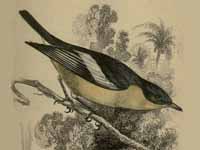
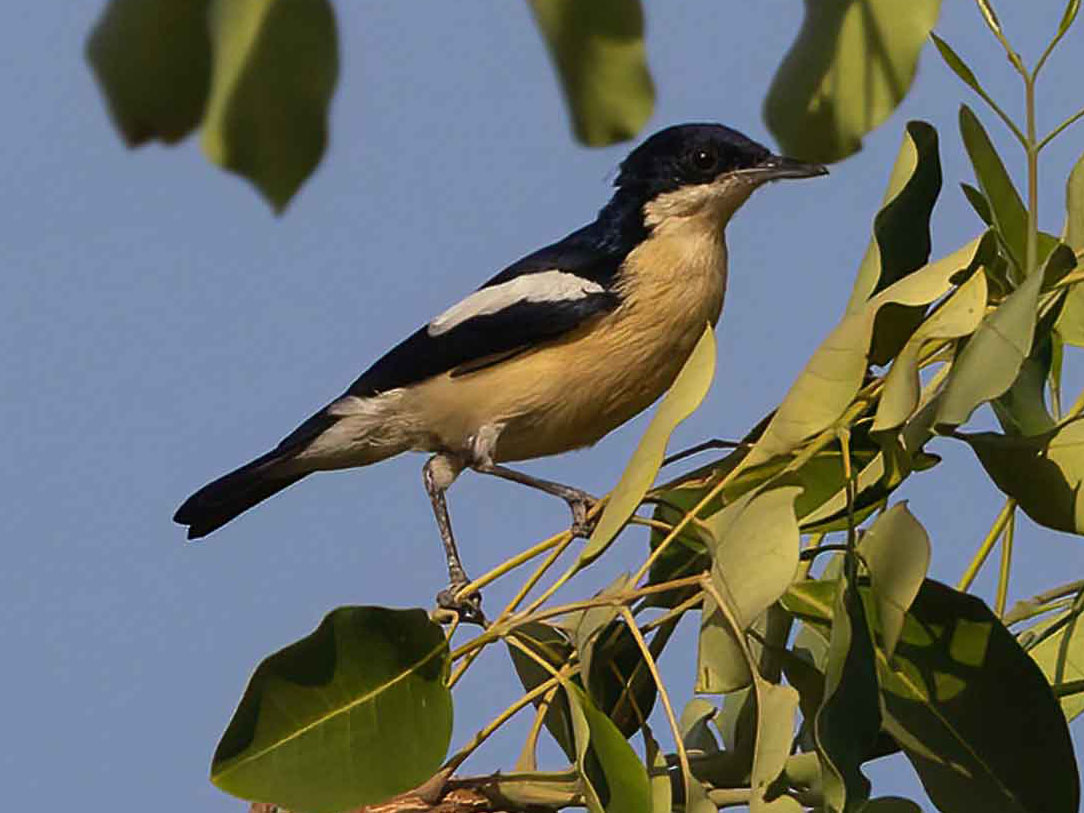

Order Passeriformes Family Hypocoliidae
Hypocolius Hypocolius ampelinus
Description: The hypocolius, also known as the grey hypocolius, has mainly gray plumage. The male has a black eye mask and black terminal tail band. It is shy and will fly to thick cover when disturbed The female lacks the mask and is brownish-grey. They have the appearance of a waxwing and DNA evidence suggest that might be one of their closest relatives.
Range: Northeast Africa, southwest Asia .
Habitat: Semi-desert.
Diet: Fruits and berries; also insects.
Conservation status: Least Concern.
Image by:
1, 2) Pkspks 3) PkspksRange: Northeast Africa, southwest Asia .
Habitat: Semi-desert.
Diet: Fruits and berries; also insects.
Conservation status: Least Concern.
1, 2) Female 3) Male
